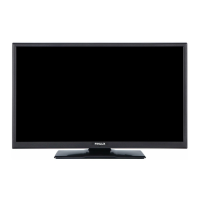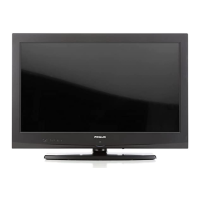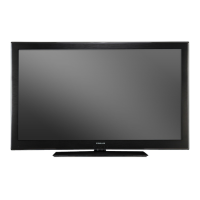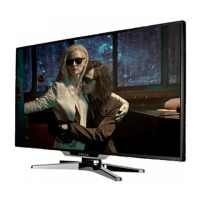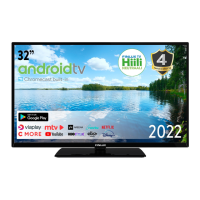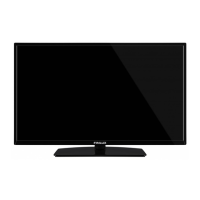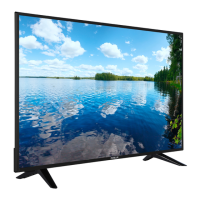Do you have a question about the Finlux 32FLKR185D and is the answer not in the manual?
Describes device placement, ventilation, and environmental conditions for safe operation.
Outlines the TV's purpose and crucial safety warnings for users.
Covers electrical requirements and safe TV placement.
Details safe handling of power cords, avoiding water, and maintaining airflow.
Addresses heat precautions, headphone volume, wall mounting, screen care, and cleaning.
Explains power saving modes and directs users to qualified personnel for servicing.
Lists major functionalities and items provided with the TV.
A brief section introducing the concept of watching TV.
Explains how to use the physical control buttons on the TV.
Details changing volume, channels, input sources, and powering on/off.
Details the purpose of each button on the remote control.
Illustrates various connectors (Scart, VGA, HDMI, USB, CI) and their uses.
Provides critical information on using specific connections like Side AV, USB, and CI modules.
Explains how to insert and use a CAM for digital channels.
Describes messages shown when the TV enters standby due to inactivity or no signal.
Step-by-step guide on how to insert batteries into the remote.
Instructions for connecting power, antenna, and turning the TV on/off.
Guides through the first-time setup process, including language and country selection.
Details setting country, search type, and channel scanning via aerial or cable.
Explains how to connect USB devices for media playback and navigate the browser.
How to adjust aspect ratio and manage the channel list.
Details various picture adjustments like Mode, Contrast, Brightness, etc.
Covers volume, equalizer, balance, sound mode, and AVL.
Explains automatic and manual channel scanning and tuning.
Details settings like language, parental controls, timers, and recording configuration.
Covers standby search, store mode, and power-up preferences.
Explains how to view programme information and navigate the guide.
How to set timers for recording or viewing programmes.
Details necessary USB drive capacity and formatting for recording.
Explains recording types and how to play back recorded content.
Covers settings for recording and formatting USB disks.
How to access, view, and mix teletext with broadcast.
Steps to manually check and install software updates via interface and automatic search.
Solutions for common problems like ghosting, no power, poor picture, and no sound.
Addresses remote control, input source, recording, and USB speed problems.
Lists typical display modes supported by the TV.
Lists broadcast, reception, audio, and power details.
Details file types compatible with the TV's USB media player.
Table showing DVI resolutions supported at different frequencies.

